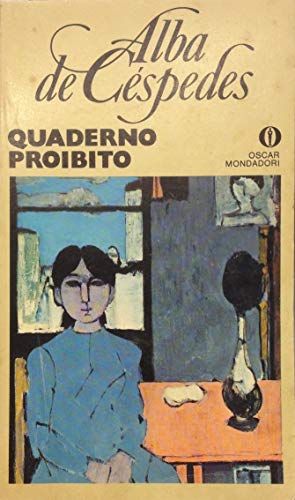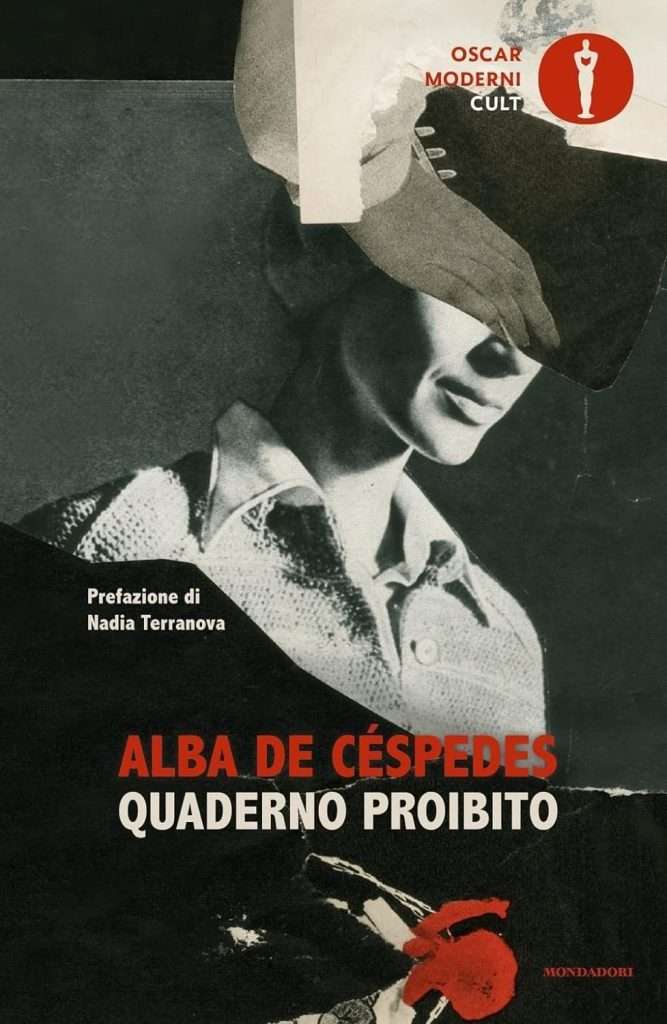“De Cespedes Quaderno Proibito” is a captivating Italian novel. It explores themes of secrecy and personal introspection.
Set in post-war Italy, Alba de Cespedes’ “Quaderno Proibito” unveils the story of Valeria, a woman torn between her roles as wife, mother, and individual. Her secret diary becomes a means to voice her innermost thoughts, desires, and frustrations. The book delves into the complexities of identity and societal expectations.
Readers are drawn into Valeria’s struggles, making the novel both relatable and thought-provoking. It challenges the norms and showcases the silent battles many face. This introduction aims to provide a glimpse into the rich narrative, sparking interest in the profound journey of self-discovery depicted in “De Cespedes Quaderno Proibito. “

Credit: www.ibs.it
Introduction To Quaderno Proibito
Welcome to a journey into the world of Quaderno Proibito, a captivating novel by Alba de Céspedes. This book, often referred to as the “Forbidden Notebook,” is an intimate exploration of personal and societal themes that resonate deeply. Whether you are a literature enthusiast or someone discovering classic novels, this guide will introduce you to the historical background and cultural significance of Quaderno Proibito. Let’s dive in!
Historical Background
First published in 1952, Quaderno Proibito emerged during a post-war era. Italy was undergoing significant changes, and the societal norms were in flux. Alba de Céspedes, an influential writer, used her novel to reflect the struggles and transformations of the time.
Set against this backdrop, the book tells the story of Valeria Cossati, a middle-aged woman who buys a notebook to jot down her private thoughts. This simple act of purchasing a notebook becomes a powerful symbol of personal freedom and introspection. However, it also highlights the restrictive societal expectations placed upon women.
Here is a brief timeline to understand the context better:
| Year | Event |
|---|---|
| 1945 | End of World War II |
| 1946 | Italy becomes a Republic |
| 1952 | Publication of Quaderno Proibito |
Cultural Significance
Beyond its historical context, Quaderno Proibito holds profound cultural significance. The novel is more than just a story; it is a commentary on the role of women in society. Valeria’s secret notebook becomes a mirror reflecting her inner conflicts, desires, and the pressures she faces.
De Céspedes skillfully portrays the silent battles fought by women, making the novel a timeless piece. It resonates with readers from various backgrounds, offering insights into the universal quest for identity and self-expression.
Why should you read Quaderno Proibito? Here are a few reasons:
- Empowerment: It empowers readers to explore their own thoughts and feelings.
- Historical Insight: Provides a window into post-war Italy and its societal dynamics.
- Relatable Themes: Addresses themes that are still relevant today.
In essence, Quaderno Proibito is a literary gem that continues to inspire and provoke thought. It encourages readers to reflect on their own lives and the world around them. So, if you are looking to dive into a book that combines historical richness with deep cultural insights, this is the perfect choice!

Credit: www.abebooks.com
The Life Of Alba De Céspedes
Alba de Céspedes, a name that resonates with literary brilliance and profound insights into the human experience. Her life story is as compelling as her works, and it is this rich tapestry of experiences that shaped her into one of Italy’s most cherished authors. In this blog post, we delve into the life of Alba de Céspedes, focusing on her early years and her remarkable literary career.
Early Life And Education
Alba de Céspedes was born on March 11, 1911, in Rome, Italy. She was the daughter of Carlos Manuel de Céspedes y Quesada, a Cuban ambassador to Italy, and Laura Bertini-Cesaresco, an Italian aristocrat. This unique blend of cultures influenced Alba’s worldview from a young age. Growing up, Alba was exposed to a variety of literary and cultural influences that would later shape her writing.
Her education was comprehensive and diverse. She attended schools in Italy and France, which gave her a broad perspective on European culture and literature. Alba showed a keen interest in writing from an early age, often penning short stories and poems. Her educational journey was not just about academics; it was about understanding the world and the people in it, a theme that would become central in her works.
Literary Career
Alba de Céspedes’ literary career began in the 1930s. Her first novel, “L’Anima Degli Altri”, was published in 1935 and received critical acclaim. However, it was her novel “Quaderno Proibito” (translated as “The Forbidden Notebook”) that truly established her as a literary force. This novel, written in the form of a diary, explores the inner life of a woman trapped in a patriarchal society, a theme that was both daring and revolutionary at the time.
Throughout her career, Alba continued to write novels, short stories, and essays that explored themes of identity, freedom, and the female experience. Her works often reflected her own struggles and observations, making them deeply personal yet universally relatable. Alba’s writing style is known for its clarity, emotional depth, and keen psychological insights.
In addition to her novels, Alba de Céspedes was also a journalist and a screenwriter. She used her platform to advocate for women’s rights and social justice, making her not just a literary icon but also a significant cultural and political figure.
Alba de Céspedes’ life and career are a testament to her resilience, creativity, and unwavering commitment to truth. Her works continue to inspire and resonate with readers around the world, making her a timeless figure in the literary world.
Themes In Quaderno Proibito
“Quaderno Proibito” by Alba de Céspedes explores several deep themes. These themes resonate with readers across various cultures and times. The book dives into the complexities of feminism, gender roles, identity, and self-discovery. Each theme is portrayed with profound insight and emotion.
Feminism And Gender Roles
The novel delves into the struggles of women in a patriarchal society. It highlights the limitations imposed on women by traditional gender roles. The protagonist fights to find her voice in a male-dominated world. She challenges the expectations placed on her by society and her family. Her journey reflects the broader feminist struggle for equality and freedom.
Identity And Self-discovery
“Quaderno Proibito” also addresses the theme of identity and self-discovery. The protagonist embarks on a personal journey to understand herself. She questions her role as a wife, mother, and individual. Through writing in her secret notebook, she explores her desires and dreams. This process of self-discovery is both painful and liberating. It reveals the inner conflicts and aspirations that define her identity.

Credit: www.amazon.co.uk
Narrative Techniques
De Cespedes’ Quaderno Proibito offers readers a unique storytelling experience through its clever use of narrative techniques. These methods not only enhance the plot but also deepen our understanding of the characters and their complex emotions. In this section, we will explore two key techniques: the first-person perspective and the use of symbolism.
First-person Perspective
The novel is told from the first-person perspective, allowing readers to dive directly into the protagonist’s thoughts and feelings. This technique creates an intimate connection between the reader and the narrator. We get to see the world through the protagonist’s eyes, experiencing their joys, fears, and doubts.
For instance, when the protagonist writes in her forbidden notebook, we are privy to her most private thoughts. This perspective makes her struggles and desires feel real and relatable. The first-person narrative also adds a layer of authenticity to the story, as it feels like we are reading a personal diary.
Use Of Symbolism
Symbolism is another powerful tool used by De Cespedes. Throughout Quaderno Proibito, various objects and actions take on deeper meanings, enriching the story. One prominent symbol is the notebook itself. It represents the protagonist’s inner life, her secrets, and her rebellion against societal norms.
Whenever the protagonist writes in her notebook, it symbolizes her attempt to carve out a space for herself in a world that often stifles her voice. The act of writing becomes a form of resistance and self-expression. It’s a powerful reminder of the importance of finding one’s voice, even in difficult circumstances.
| Symbol | Meaning |
|---|---|
| Notebook | Inner life, secrets, rebellion |
| Writing | Self-expression, resistance |
By using these narrative techniques, De Cespedes crafts a story that is both compelling and thought-provoking. The first-person perspective draws us in, while the symbolism adds layers of meaning to the narrative. Together, they create a rich and immersive reading experience.
Have you ever read a book that used these techniques to great effect? How did it enhance your reading experience? Feel free to share your thoughts in the comments below!
Character Analysis
When delving into De Cespedes’ “Quaderno Proibito,” one cannot help but be drawn into the intricate tapestry of characters that drive the narrative. Each character plays a pivotal role in shaping the story, bringing to life a world of emotion, conflict, and resolution. In this section, we will closely examine the protagonist’s journey and the supporting characters, understanding their motivations, struggles, and transformations throughout the book.
Protagonist’s Journey
The protagonist, Valeria, is a beacon of resilience and introspection. Her journey is marked by a profound internal struggle as she navigates the complexities of her identity and desires. Valeria’s character is meticulously crafted, portraying a woman torn between societal expectations and personal fulfillment. She is relatable, evoking empathy as she confronts her fears and dreams.
Valeria’s evolution is depicted through her secret journal, where she pours out her innermost thoughts. This journal becomes a symbol of her quest for self-understanding and liberation. As readers, we witness her gradual transformation from a passive participant in her life to an active seeker of her truth.
Valeria’s journey is not just about self-discovery but also about challenging the status quo. Her courage to question and defy societal norms makes her a compelling and inspiring character. Can you imagine the courage it takes to defy the world around you? Valeria does just that, and it is this journey that forms the heart of “Quaderno Proibito.”
Supporting Characters
The supporting characters in “Quaderno Proibito” are no mere backdrop; they are essential to Valeria’s story and her development. Each character adds depth and nuance to the narrative, reflecting different facets of society and human nature.
- Enrico: Valeria’s husband, Enrico, represents the traditional values and expectations that Valeria grapples with. His character is both a source of comfort and conflict for her.
- Riccardo: Valeria’s son, Riccardo, brings a youthful perspective and a sense of hope. His interactions with Valeria highlight generational contrasts and the evolving dynamics within the family.
- Marta: As Valeria’s friend, Marta provides a sounding board for her thoughts. Marta’s own experiences and advice play a crucial role in Valeria’s journey towards self-actualization.
Each of these characters contributes to the rich, emotional landscape of the novel, offering different viewpoints and challenges that Valeria must navigate. They are not just supporting actors in her story, but integral to her growth and the unfolding of the plot.
The characters in “Quaderno Proibito” are a testament to De Cespedes’ skill in creating a vivid and relatable world. Their interactions and development are what make the story resonate long after the last page is turned.
Impact On Italian Literature
De Cespedes’ “Quaderno Proibito” holds a special place in Italian literature. This novel dives into personal and social issues. It explores themes of identity, freedom, and societal roles. Its impact on Italian literature has been profound and lasting.
Influence On Contemporary Writers
“Quaderno Proibito” has inspired many modern Italian writers. They find its exploration of deep themes compelling. The novel’s style and narrative techniques are often mirrored. Contemporary writers admire De Cespedes’ ability to merge personal and political themes.
Many modern authors cite “Quaderno Proibito” as a key influence. They appreciate its honest portrayal of women’s struggles. This has led to a richer, more nuanced literary landscape. The novel’s legacy continues through these inspired works.
Critical Reception
Critics have praised “Quaderno Proibito” since its release. They commend its bold approach to sensitive subjects. Reviews highlight the novel’s emotional depth. Its exploration of complex themes has earned much acclaim.
Many literary scholars study De Cespedes’ work in depth. They consider it a cornerstone of modern Italian literature. “Quaderno Proibito” is often included in academic courses. This ensures its continued relevance and study in literary circles.
Translations And Adaptations
When discussing the timeless work “Quaderno Proibito” by Alba de Céspedes, it’s fascinating to explore its numerous translations and adaptations. This novel, with its poignant exploration of a woman’s inner life and societal constraints, has resonated with audiences worldwide. Let’s delve into how this book has traveled across borders and mediums.
International Reach
One of the most remarkable aspects of Quaderno Proibito is its international reach. Originally written in Italian, the novel has been translated into numerous languages, making its powerful narrative accessible to a global audience. Translations in French, Spanish, German, and English, among others, have allowed readers from diverse cultures to connect with the protagonist’s journey.
For instance, the English translation has received widespread acclaim, opening the door for English-speaking readers to appreciate de Céspedes’ masterful storytelling. This translation effort has also provided a platform for the book to be included in international literature courses, further cementing its status as a classic.
Film And Stage Adaptations
The impact of Quaderno Proibito extends beyond the written word. Its compelling narrative has inspired various film and stage adaptations. Adapting a novel to the screen or stage is no small feat, yet the essence of de Céspedes’ work has been preserved, if not enhanced, through these different mediums.
In the 1960s, an Italian film adaptation brought the story to life, capturing the novel’s emotional depth and the protagonist’s inner turmoil. The film was well-received, with critics praising its faithful representation of the source material. Additionally, several stage adaptations have been performed worldwide, each bringing a unique interpretation to the beloved novel.
These adaptations have introduced Quaderno Proibito to new audiences, ensuring that de Céspedes’ poignant exploration of identity and societal expectations continues to resonate with people of all ages and backgrounds.
In conclusion, the translations and adaptations of Quaderno Proibito have played a crucial role in maintaining its relevance and accessibility. Whether through the written word, film, or stage, the novel’s powerful themes continue to captivate and inspire audiences around the world.
Frequently Asked Questions
What Is The Synopsis Of Quaderno Proibito?
“Quaderno Proibito” is a novel by Alba de Céspedes. It explores a woman’s secret diary, revealing personal struggles and societal expectations. The protagonist’s inner thoughts and emotions highlight her quest for identity and autonomy. The book delves into themes of gender roles, family dynamics, and personal freedom.
What Is ‘de Cespedes Quaderno Proibito’ About?
‘De Cespedes Quaderno Proibito’ is a novel. It explores personal struggles and societal expectations.
Who Is The Author Of ‘de Cespedes Quaderno Proibito’?
The author is Alba de Céspedes, an Italian-Cuban writer. She wrote many impactful works.
When Was ‘de Cespedes Quaderno Proibito’ Published?
It was published in 1952. The novel gained notable attention.
Why Should I Read ‘de Cespedes Quaderno Proibito’?
Reading it offers insights into human emotions. It portrays deep societal issues.
Conclusion
De Cespedes’ “Quaderno Proibito” offers a deep look into human emotions. It explores love, guilt, and self-discovery. The book’s themes are relatable and timeless. Readers feel connected to the characters’ struggles. This novel remains a classic for its honest portrayal of life.
If you enjoy thought-provoking stories, this book will not disappoint. Reading “Quaderno Proibito” offers valuable insights into the human experience. So, give it a try. You might find it both moving and enlightening.







